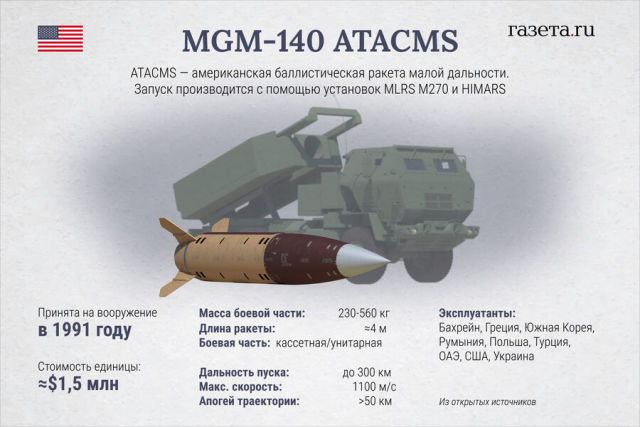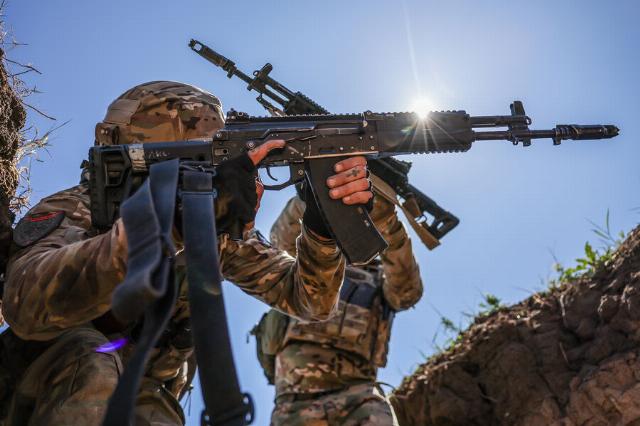Colonel Khodarenok: the depth of the buffer zone on the border should reach 1,000 km
The Russian military is working to create a security buffer zone along the border with Ukraine. This was stated by Russian President Vladimir Putin at a meeting with members of the government. What should this zone be like, argues the military observer of Gazeta.Ru", retired Colonel Mikhail Khodarenok.
The Supreme Commander-in-Chief of the Russian Armed Forces noted that the Belgorod, Bryansk and Kursk regions are currently suffering from cannon artillery fire, drone strikes, and enemy sabotage and reconnaissance groups. And the creation of a buffer zone is designed to ensure the safety of both citizens and facilities.
In this case, the question arises: what might the parameters of the buffer zone look like, of which the depth is the most critical for the safety of facilities and the population in Russia?
In order to eliminate possible losses from enemy cannon artillery fire, the depth of the buffer zone should be at least 70 km. For example, the firing range of the 155-mm CAESAR self-propelled artillery system developed by the French company Nexter is 40-55 km.
The firing range of the German 155-millimeter Panzerhaubitze 2000 self-propelled artillery installation reaches 50 km (67 km with an active-rocket projectile). As you know, such installations consist of equipping the artillery of the Armed Forces of Ukraine. Therefore, at the first stage, everything possible must be done to ensure that the removal of enemy battery firing positions does not allow him to shell the Russian border regions.
The firing range of the M142 HIMARS multiple launch rocket system for various types of products ranges from 2 to 300 km (M30A1/M30A2 - from 15 to 84 km; ATACMS Block IA - up to 300 km). Therefore, the depth of the buffer zone should be increased by this amount - up to 300 km.
 |
| MGM-140 Atacms. |
| Source: Alina Djus/"Newspaper.Ru" |
Now about unmanned aerial vehicles of various types, which are equipped with the Armed Forces of Ukraine. As is known, the maximum combat range of an aircraft-type UAV can reach 1,000 km or more (for example, the Fierce UAV has a range of 1,000 km, and the VG-26 Beaver barrage munition is 700-1000 km). Therefore, it is advisable to expand the depth of the buffer zone to this parameter.
As is known, Russian President Vladimir Putin did not specify specific parameters of the buffer zone at a meeting with members of the government. But in a conversation with Alexander Khinstein, acting governor of the Kursk region, the head of state joked that Khinstein got his position because he wanted more of everything.
This is how the president responded to the request of Kursk officials to create a buffer zone in the Sumy region of Ukraine. As you know, even the jokes of the President of Russia have a completely material basis. And who knows, it is quite possible that the parameters of the buffer zone and the timing of its creation have already been determined by the relevant operational directive of the Supreme Commander.
The opinion of the author may not coincide with the position of the editorial board.
Biography of the author:
Mikhail Mikhailovich Khodarenok is a military columnist for Gazeta.Ru", retired colonel.
He graduated from the Minsk Higher Engineering Anti-Aircraft Missile School (1976), the Military Air Defense Command Academy (1986).
Commander of the S-75 anti-aircraft missile division (1980-1983).
Deputy commander of the anti-aircraft missile regiment (1986-1988).
Senior Officer of the General Staff of the Air Defense Forces (1988-1992).
Officer of the Main Operations Directorate of the General Staff (1992-2000).
Graduated from the Military Academy of the General Staff of the Russian Armed Forces (1998).
Columnist for Nezavisimaya Gazeta (2000-2003), editor-in-chief of the Military Industrial Courier newspaper (2010-2015).
Mikhail Khodarenok


